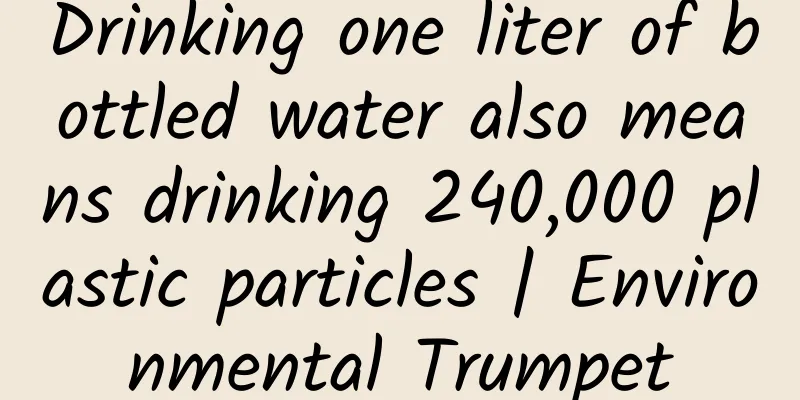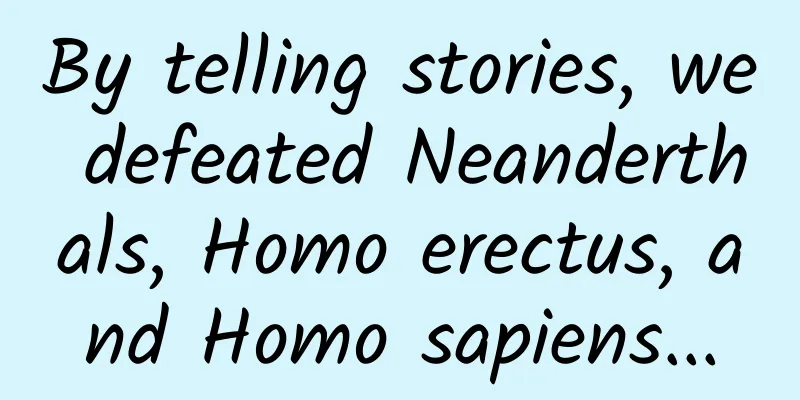Drinking one liter of bottled water also means drinking 240,000 plastic particles | Environmental Trumpet

|
Hello everyone, this is the 4th issue of the Environmental Trumpet column. In this column, you can see different topics such as climate, pollution, energy, agriculture, etc., and learn about how our environment has changed recently, what good news and (a lot of) bad news there are. In this issue, we have collected the following environmental research and news worth reading: 1) Research found that there are about 240,000 plastic particles in one liter of bottled water 2) A new technology can better recycle old clothes 3) Greenland is losing 20% more ice than previously estimated 4) As global temperatures rise, the safe period of ice will shorten 5) Bottom trawling may release up to 370 million tons of carbon dioxide into the atmosphere each year 6) Power consumption of artificial intelligence will increase significantly There are approximately 240,000 plastic particles in one liter of bottled water. A recent study published in the Proceedings of the National Academy of Sciences found that the average bottled water contained 240,000 detectable plastic particles per liter - 10 to 100 times higher than previous estimates. Because of technological innovation, researchers have been able to explore a whole new world of plastics - nanoplastics, which are even smaller than microplastics. How small are nanoplastics? Microplastics refer to plastic fragments between 1 micron and 5 millimeters, while nanoplastics refer to plastic particles smaller than 1 micron . The diameter of a human hair is about 70 microns, and nanoplastics smaller than 1 micron cannot be distinguished by the naked eye. A terrifying world of nanoplastics|Naixin Qian Unlike microplastics, nanoplastics can enter the bloodstream directly through the intestines and lungs, and then be transported to the heart and brain . They can also invade individual cells and enter the unborn fetus through the placenta. The specific damage of nanoplastics to the human body is still under study. The global annual production of plastics is close to 400 million tons. Many plastic products will shed plastic particles during use. Plastic waste that is difficult to degrade will continue to split into smaller and smaller plastic particles, but will not disappear completely. The research on nanoplastics in bottled water may just be the beginning. Plastic is like a cancer that is slowly spreading on the earth. If we don’t take action, all living things on the earth may not be able to escape the invasion of plastic. A new technology can better recycle old clothes Clothing recycling has always been a difficult problem. In our daily lives, clothing recycling is basically selling to second-hand stores or donating to people in need. However, no matter how much clothing is used, it will eventually reach its end. When it is finally discarded, it will basically end up in a landfill or be incinerated. The biggest difficulty in turning the fabric of an old piece of clothing into a new piece of clothing is that the chemical composition of clothing is very complex and it is difficult to separate the different components . Take out a piece of clothing and look at the clothing ingredient label, you can see many different ingredients - cotton, wool, nylon (also known as polyamide), etc. If these ingredients are not separated during recycling, it will greatly affect the performance of the new fabric. Different fabric components in a shawl | Photo by the editor Researchers at Aarhus University in Denmark have recently developed a new recycling technology that can completely remove elastane fibers from nylon . Clothes are generally made of fibers such as nylon or cotton wrapped around elastic fibers, which are mainly composed of long molecular chains. The researchers heated the clothes to 225 degrees Celsius and added specific chemicals such as alcohol to break up the long chains of elastic fiber molecules. In this way, the elastic fibers can be separated from other components. But the technology is not yet ready for large-scale trials. Recycling clothes is a difficult problem, and a breakthrough could give a world dominated by fast-moving consumer goods a break. Greenland is losing 20% more ice than previously estimated Greenland's ice sheet is shrinking. A recent study published in the journal Nature found that Greenland has lost about 20% more ice than previously estimated, with nearly every glacier retreating. In total, Greenland has lost nearly 5 trillion tons of ice since 1992. Once the glaciers melt, they will add a large amount of fresh water to the ocean, affecting the ocean current system and in turn affecting the temperature of coastal countries and regions. A team from ETH Zurich is measuring the shrinkage of Switzerland's Rhone Glacier | nytimes.com There are also some emergency measures to slow down the melting of glaciers, such as covering the glaciers with a "big blanket" to reduce the solar radiation absorbed by the glaciers. In 2020, a research team in China covered the Dagu Glacier on the eastern edge of the Qinghai-Tibet Plateau with a 500-square-meter "blanket" to artificially slow down the melting of the glacier. Covering the Dagu Glacier with a blanket|West China Metropolis Daily Recently, there is another hot topic about glaciers - transporting 100,000-year-old ice from Greenland to a bar in Dubai . The people who are making trouble also argued that the way of collecting ice will not harm the glaciers and can prevent the melting of ice from causing sea level rise. Although some experts believe that this method of ice harvesting may not have much impact on glaciers, the carbon emissions generated during transportation are also huge . Do humans really need to drink mineral water from Paris and eat ice shipped from Greenland... Greenland's ice is considered the "purest ice"|@QSGREENLAND/TIKTOK The ice may not be that solid anymore... Harbin is really hot this winter. If you go to Harbin, you can see that the river is frozen solid. You can even drive up to it and go ice skating and ice fishing. It is so much fun. But the bad news is that rising temperatures are damaging ice conditions on lakes around the world. A 2022 study found that if global warming exceeds 1.5 degrees Celsius, the period of "safe ice" will be shortened by two weeks; if warming exceeds 3 degrees Celsius, it will be shortened by three weeks . Ice Fishing | Tuchong Creative In the past two months, Minnesota, USA, has had a warm winter, and the lake that was previously suitable for ice fishing has become a "trap". Some ice fishing enthusiasts drove onto the ice in winter like in previous years, but because the ice was not as solid as before, they unfortunately fell into the icy lake and died. "Over the past 50 years, Minnesota has experienced an average decrease in lake ice time of 10 to 14 days, with some popular lakes experiencing decreases of nearly three weeks," state authorities said after surveying dozens of the state's lakes in 2021. Bottom trawling may release 370 million tonnes of carbon dioxide per year Bottom trawls have long been criticized for being large nets that are dragged to the bottom of the ocean by boats and then, like a gaping mouth, collect all the marine life on the bottom. The seafloor that has been dragged by bottom trawls is barren. Ecosystems such as corals and seagrass beds are greatly damaged , and these habitats are particularly important for marine life. Bottom trawls are also prone to catching non-target species , whether you are a turtle or a juvenile fish, they will catch everything. This trawling method is also prone to damage to the fishing nets, which become marine debris. Therefore, bottom trawling is an unsustainable fishing method. Bottom trawls can catch a lot of non-target fish|Western Sahara Resource Watch Now, a new study finds that bottom trawling is also harmful to the climate . Published in the journal Frontiers in Marine Science, the study suggests that bottom trawling could release up to 370 million metric tons of carbon dioxide into the atmosphere each year . That’s about half of the emissions produced annually by the entire international shipping industry , according to estimates by the International Energy Agency. This carbon comes from organic matter long buried on the ocean floor. Without human interference, these deposits can stay put for thousands of years. But bottom trawling stirs up the sea floor, releasing the stored carbon back into the water and into the air . However, some researchers believe that the carbon emissions estimated in this study are too high, and the exact emission figures are still under debate. However, bottom trawling has already committed many "crimes", and strengthening supervision is necessary. Artificial intelligence will double power consumption On January 24, the International Energy Agency released the Electricity 2024 report, analyzing and forecasting global electricity policy and market developments. The report points out that due to the development of emerging technologies such as artificial intelligence and cryptocurrency, data center electricity consumption is increasing. By 2026, data centers around the world are expected to consume more than 1,000 terawatt hours of energy, which is equivalent to the energy consumption of Japan . In the United States alone, data center energy consumption may account for more than one-third of all energy demand. In 2022, the energy consumed by data centers worldwide will be approximately 460 terawatt hours, and the rapid development of emerging technologies, especially generative artificial intelligence, has led to a rapid increase in energy consumption in this industry. Technologies such as artificial intelligence and cryptocurrency rely on complex computing power, which not only requires many large machines to drive, but also requires a lot of electricity and water to keep the machines running and cool . Therefore, updating regulations and improving technology to improve efficiency are crucial to slowing down the energy consumption of data centers. Author: Austenite, Mai Mai Editor: Little Towel, Mai Mai Title image source: Tuchong Creative |
>>: If the corals are gone, where will the crabs attach themselves to?
Recommend
CATL is in a panic. New technology breakthroughs have greatly reduced Panasonic's battery manufacturing costs
According to foreign media reports, Japan's P...
"How much is the salary for SEO in Lanzhou" How much is the salary in the SEO industry?
: : : : : : : : : : : : : : : How is the salary o...
2019 Content Marketing Maturity White Paper
In 2014, Mark Schaefer proposed the "content...
Some technologies of Visual Studio Code come from Github
Microsoft released its first cross-platform code ...
Aerobic exercise can help you lose weight while anaerobic exercise can help you gain weight. Is it really that absolute?
In the national fitness trend, there are two word...
iFLYTEK Conference Mouse M610 Review: An all-around tool for offices, classrooms, and conference rooms
The mouse has become an important accessory in co...
Qingdao Doublestar paid a high price for the acquisition, but why did South Korea's Kumho still refuse to comply?
After overcoming many hurdles in its acquisition ...
up to date! Data rankings of 59 information flow advertising platforms!
The following is the latest traffic ranking of 59...
Lao Luo Weibo 1799: The double-edged sword effect of excessive marketing
Because of jet lag and insomnia, I checked Weibo ...
After buying the CNGP laser radar at a high price, it was abandoned by the official. 500 old Xiaopeng P5 owners jointly defended their rights
Recently, nearly 500 Xiaopeng P5 owners jointly s...
iOS 15 is coming soon: a bunch of new features
iOS 15 release date: September 2021 Apple release...
The secret of Toutiao article recommendation mechanism: how to get massive recommendations?
Whether for the sake of money or the platform'...
4 steps to create a National Day marketing campaign plan!
I have read many books on training marketing dire...
Spring Festival Marketing Promotion: How to seize the marketing center position on platforms such as Tencent and Toutiao?
The Spring Festival is coming soon, have you boug...
Many people don't realize the relationship between aging and eyebrows! Let's take a look at your eyebrows. Are they like this?
Describe a handsome guy: thick eyebrows and big e...









